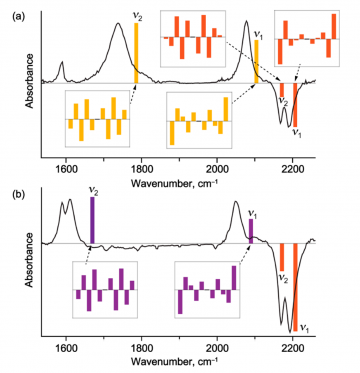Nanoring assemblies
by Martin Peeks (Harry Anderson group, hla.chem.ox.ac.uk)
This study investigated the light-harvesting properties of nanoring assemblies, which are involved in photosynthesis. Nanoring assembly properties were simulated using Gaussian and the benefit from using the ARC service was not only the availability of the software (licensed to ARC) but also the possibility of running a large number of simulations on separate compute nodes at the same time, giving the advantage of a large processing throughput.

Comparison between calculated vibrational frequencies (coloured sticks) and experimental time-resolved infra-red (vibrational) spectra.

A template controls the synthesis of a five-porphyrin nanoring.
Structural dynamics of lipase enzymes
This research investigated the immobilisation process of the M37 lipase enzyme, using large-scale molecular dynamics simulations to understand how the enzyme becomes attached to a surface. This process has possible applications in biodiesel production, food and detergent industries. The study made use of the ARC installation of Gromacs, which was optimised for the cluster Infiniband network and the simulations were distributed on a large number of compute nodes to shorten the processing time.

Simulation of the M37 lipase (cyan and green) binding to a bilayer surface.